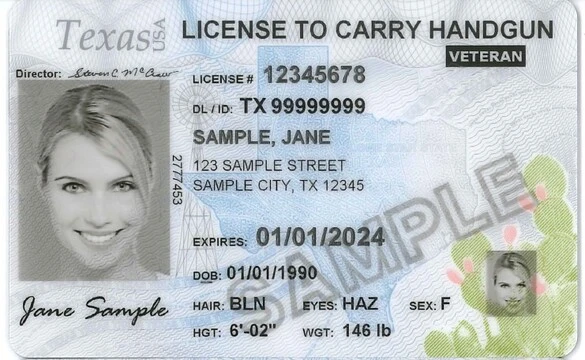In the face of an unthinkable event, such as an active shooter situation, knowledge is power. Understanding how to react can mean the difference between life and death. This article aims to equip you with the necessary knowledge, focusing on a strategy known as "Run, Hide, Fight."
Article Summary
- The article provides a comprehensive guide on how to survive an active shooter situation using the "Run, Hide, Fight" strategy.
- It begins by defining an active shooter and discussing the unpredictable and rapidly evolving nature of such situations.
- The "Run, Hide, Fight" strategy is then explained in detail. Running, or evacuating, is always the first option if possible. If running isn't possible, the next best option is to hide. Fighting is a last resort, to be used only when life is in imminent danger.
- The article provides practical tips for each stage of the strategy and shares examples of real-life situations where these tactics have been successfully employed.
- It emphasizes the importance of preparation and training in active shooter situations, suggesting resources such as the Federal Bureau of Investigation and the Department of Homeland Security for further learning.
- The article also provides guidance on how to interact with law enforcement during and after an active shooter incident.
- It concludes by listing common mistakes to avoid during an active shooter situation, such as freezing in place or attempting to move wounded individuals.
- The article ends with a call to action, encouraging readers to educate themselves and their loved ones about what to do in an active shooter situation.
Understanding the Active Shooter Situation
An active shooter is an individual actively engaged in killing or attempting to kill people in a confined and populated area. These situations are unpredictable and evolve quickly, often before law enforcement can arrive on the scene. The Department of Homeland Security notes that active shooter situations are typically over within 10 to 15 minutes. This underscores the importance of individual preparedness and immediate action.
Active shooter incidents have unfortunately become a part of our modern reality. According to the Federal Bureau of Investigation, the U.S. experienced 28 active shooter incidents in 2019 alone, resulting in numerous casualties. These statistics highlight the critical need for understanding and preparing for such situations.
The Run, Hide, Fight Strategy: An Overview
The "Run, Hide, Fight" strategy is a simple yet effective approach endorsed by numerous safety and law enforcement agencies, including the Department of Homeland Security. It provides a clear course of action that can be easily remembered, even in high-stress situations.
The strategy is as follows: If possible, the first option should be to run or evacuate. If running is not possible, the next best option is to hide. As a last resort, and only when your life is in imminent danger, should you attempt to incapacitate the shooter?
Run: Evacuation as the First Option
When an active shooter situation arises, your first instinct should be to run. This is not an act of cowardice but of survival. The goal is to put as much distance as possible between you and the threat.
When choosing to run, remember these key points: Have an escape route and plan in mind. Leave your belongings behind. Keep your hands visible to ensure law enforcement personnel do not perceive you as a threat.
Consider the case of the 2017 Las Vegas shooting. Many concert-goers were able to survive by immediately running from the scene, despite the chaos and confusion. Their quick decision to run undoubtedly saved lives.
Hide: When Running Isn't an Option
There may be situations where running is not possible. In such cases, hiding is your next best option. The goal here is to make yourself less of a target while also preparing yourself to fight if it becomes necessary.
When hiding, try to find a location out of the shooter's view. Block entry to your hiding place and lock the doors if possible. Your mobile phone can be a giveaway, so make sure it's silenced.
Remember the 2012 shooting in a movie theater in Aurora, Colorado? Some survivors of that tragic incident were those who hid under the theater seats, remaining silent and out of the shooter's line of sight.
Fight: The Last Resort
Fighting is the last resort, to be used only when your life is in imminent danger. This is not about being a hero; it's about survival. If you find yourself in a situation where you must fight, be aggressive.
Use anything around you as a weapon, be it a fire extinguisher, a chair, or even a pen. Your goal is to incapacitate the shooter, allowing you or others to escape.
Consider the 2015 incident on a train traveling from Amsterdam to Paris. When a gunman opened fire, three American friends, two of them off-duty military personnel, tackled and subdued him. Their bravery and quick thinking prevented a potential massacre.
Preparing for an Active Shooter Situation
Preparation is key in any emergency, and active shooter scenarios are no exception. Regular drills and training can help individuals understand what to expect and how to respond. Many organizations, including schools and workplaces, now conduct active shooter drills alongside fire and other emergency drills.
The Federal Bureau of Investigation and other agencies offer resources for active shooter preparedness. These include online materials, workshops, and training programs. It's a good idea to take advantage of these resources and encourage others to do the same.
Interacting with Law Enforcement
When law enforcement arrives, they will be focused on neutralizing the threat. It's important to follow their instructions, keep your hands visible, and avoid sudden movements. Once you are safe, provide them with as much information as you can about the shooter, their location, and any victims.
Common Mistakes to Avoid
In high-stress situations, it's easy to make mistakes. One common mistake is denial - not recognizing the sound of gunshots for what they are and not reacting quickly enough. Another is to freeze in place, which can make you an easy target.
It's also important not to attempt to move wounded individuals, as this could cause further injury. Instead, try to provide comfort and reassurance, and leave medical care to the professionals.
Conclusion
The Run, Hide, Fight strategy is a powerful tool in the face of an active shooter situation. By understanding and practicing this strategy, you can increase your chances of survival. Remember, the goal is not to be a hero but to stay alive.
While we all hope never to find ourselves in such a situation, it's crucial to be prepared. Take the time to educate yourself and your loved ones about what to do in an active shooter situation. It's the knowledge we hope you'll never need, but if you do, it could save your life.
Additional Resources
For further information and training, consider the following resources:
- Department of Homeland Security: Active Shooter Preparedness
- Federal Bureau of Investigation: Active Shooter Resources
- Ready.gov: Active Shooter Information
Remember, in an active shooter situation, your actions can make a difference in your safety and survival. Be aware and be prepared.




